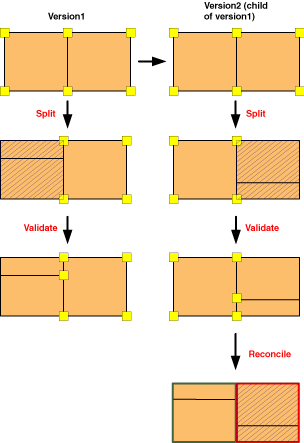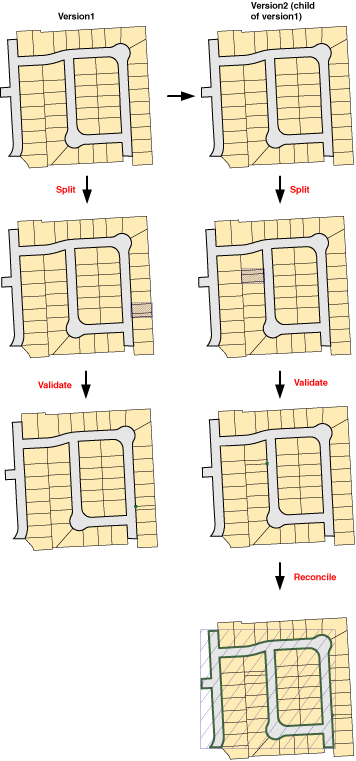Available with Standard or Advanced license.
Features that participate in topology do not have any special behavior with respect to conflicts resulting from version reconciliation. If the same feature is edited in two separate versions, and those versions are reconciled, they will be in conflict.
The most common source of conflicts resulting from the validation process of topologies is the introduction of vertices due to the integration of features during the cluster processing phase of validation.
The following examples illustrate how conflicts can result from the validate process.
Example 1—Splitting two adjacent polygons in each version
Polygons that share edges in a topology in the parent version are inherited by the child version. In this scenario, a polygon is split in the parent version, an adjacent polygon is split in the child version, and the dirty areas are validated. Splitting the polygons deletes the original features and replaces each of them with two new ones. When the versions are reconciled, both original polygons are reported as update-delete conflicts. In other words, the feature that was deleted in the parent version was updated by the clustering process when the child version was validated, and the feature that was deleted in the child version was updated by the clustering process in the parent version.

Example 2—Splitting polygons that share edges with a large right-of-way polygon
This illustrates another example in which the introduction of vertices by the validate process can introduce conflicts in a land records database. In this case, the parcel polygons that are split share edges with a very large right-of-way polygon.

Conflicts, such as those described here, can be avoided by structuring your workflow so that editors are working in different areas and by using geodatabase replication to control where users can and cannot edit. In addition, data model design can help reduce the types of conflicts illustrated in the second example by subdividing the right-of-way polygon into smaller chunks.